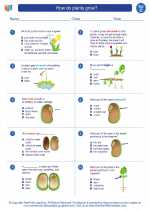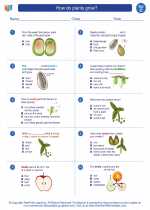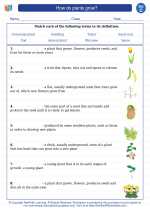Gay-Lussac's Law
Gay-Lussac's Law, also known as the pressure-temperature law, states that the pressure of a gas is directly proportional to the temperature, provided that the volume and amount of gas remain constant.
Explanation:
Gay-Lussac's Law can be expressed in the following mathematical form:
P ∝ T
Where P is the pressure of the gas and T is the temperature in Kelvin.
This means that if the temperature of a gas increases, its pressure will also increase, and if the temperature decreases, the pressure will decrease, as long as the volume and amount of gas are kept constant.
Study Guide:
- Understanding the Law: Make sure you understand the concept that pressure and temperature are directly proportional to each other when the volume and amount of gas are constant.
- Mathematical Form: Practice writing and understanding the mathematical expression of Gay-Lussac's Law (P ∝ T).
- Real-life Examples: Find examples in everyday life where Gay-Lussac's Law applies, such as in a pressure cooker or a gas cylinder.
- Graphical Representation: Learn to interpret and draw graphs that illustrate the relationship between pressure and temperature according to Gay-Lussac's Law.
- Word Problems: Solve word problems that involve changes in pressure and temperature of a gas while keeping the volume and amount constant.
Understanding Gay-Lussac's Law is important in the study of gas behavior and is fundamental in fields such as chemistry, physics, and engineering.
.◂Science Worksheets and Study Guides Third Grade. How do plants grow?
Study Guide How do plants grow?
How do plants grow?  Activity Lesson
Activity Lesson How Do Plants Grow?
How Do Plants Grow?  Worksheet/Answer key
Worksheet/Answer key How do plants grow?
How do plants grow?  Worksheet/Answer key
Worksheet/Answer key How do plants grow?
How do plants grow?  Worksheet/Answer key
Worksheet/Answer key How do plants grow?
How do plants grow?  Worksheet/Answer key
Worksheet/Answer key How do plants grow?
How do plants grow?  Vocabulary/Answer key
Vocabulary/Answer key How do plants grow?
How do plants grow?  Vocabulary/Answer key
Vocabulary/Answer key How do plants grow?
How do plants grow? 

 Activity Lesson
Activity Lesson
 Worksheet/Answer key
Worksheet/Answer key
 Worksheet/Answer key
Worksheet/Answer key
 Worksheet/Answer key
Worksheet/Answer key
 Worksheet/Answer key
Worksheet/Answer key
 Vocabulary/Answer key
Vocabulary/Answer key
 Vocabulary/Answer key
Vocabulary/Answer key

The resources above cover the following skills:
LIFE SCIENCE (NGSS)
From Molecules to Organisms: Structures and Processes
Students who demonstrate understanding can:
Develop models to describe that organisms have unique and diverse life cycles but all have in common birth, growth, reproduction, and death.